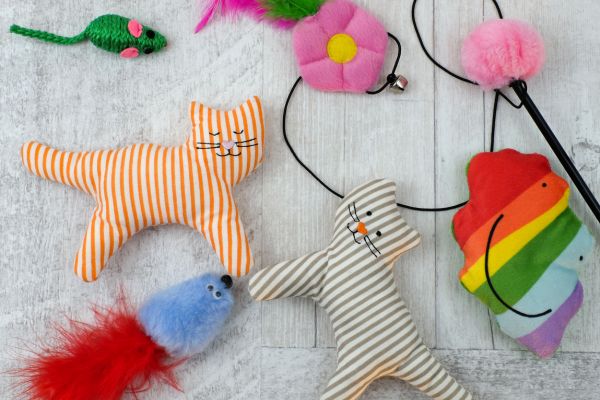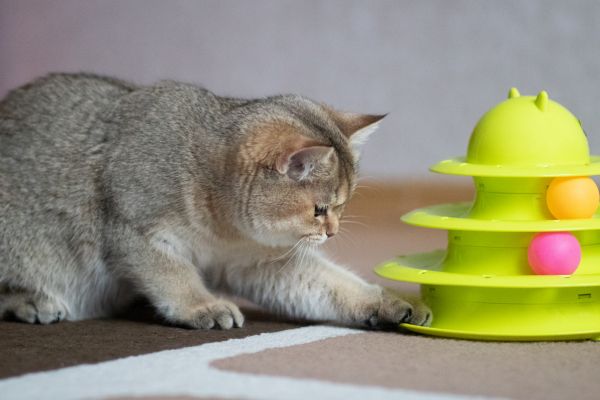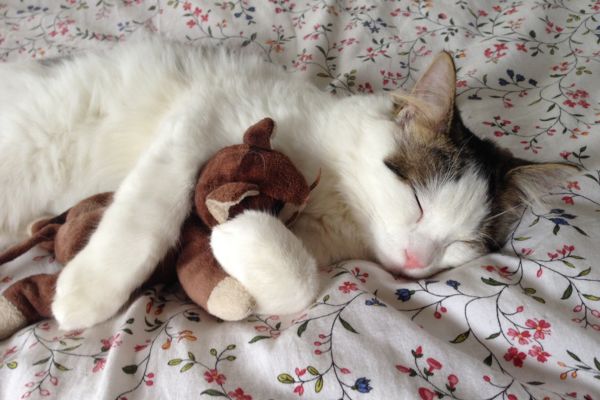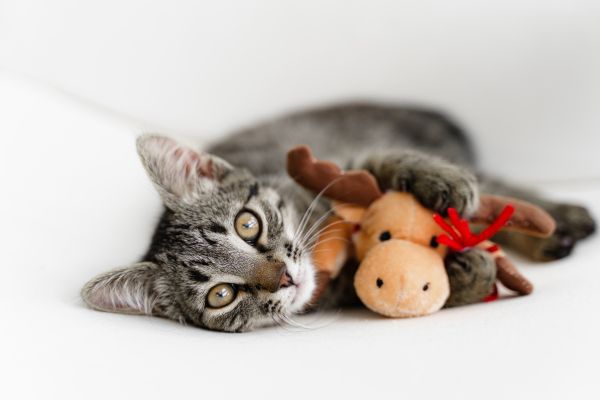Deaf cats, like their hearing counterparts, need mental and physical stimulation to stay healthy and happy. However, since they rely more on their other senses, finding suitable toys for deaf cats requires a bit of extra consideration.

In this detailed guide, we will explore the best toys for deaf cats, explain why they are effective, and provide tips on how to engage and play with your deaf feline friend. We will also answer common questions to help you better understand and care for your deaf cat.
Why Play is Important for Deaf Cats
Playing is crucial for all cats, including those that are deaf. Here are a few reasons why play is essential:

- Physical Exercise: Regular play helps maintain a healthy weight and prevents obesity.
- Mental Stimulation: Engaging activities keep a cat’s mind sharp and reduce boredom.
- Bonding: Playtime strengthens the bond between you and your cat.
- Stress Relief: Interactive play can reduce stress and anxiety in deaf cats.
Best Toys for Deaf Cats
1. Interactive Toys with Lights
Since deaf cats rely heavily on their sight, toys that incorporate lights can be very engaging. Laser pointers are a classic choice, but there are many other light-based toys available.
Examples:
- Laser Pointers: These are great for getting your cat to chase and pounce. Ensure you never shine the laser directly into your cat’s eyes.
- LED Toys: Toys with flashing lights or LED components can capture your cat’s attention and encourage active play.
2. Toys with Textures and Movements

Toys that move or have exciting textures can stimulate a deaf cat’s sense of touch. These toys can be batted around, pounced on, and chewed, providing hours of entertainment.
Examples:
- Feather Wands: These toys mimic the movement of birds and can be swatted and chased.
- Battery-Operated Toys: Toys that move erratically or mimic the movement of prey can captivate your cat.
- Crinkle Balls: These toys make a tactile noise that deaf cats can feel when they bat them around.
3. Scented Toys
Scented toys can engage a deaf cat’s keen sense of smell. Infusing toys with catnip or silvervine can make them more appealing and enjoyable.
Examples:
- Catnip Toys: Toys filled with catnip can provide stimulation and enjoyment for hours.
- Silvervine Toys: Some cats prefer silvervine over catnip. Silvervine toys can be a great alternative.
4. Puzzle Feeders
Puzzle feeders and treat-dispensing toys provide mental stimulation and reward your cat’s problem-solving skills. These toys can keep a deaf cat engaged as they work to retrieve treats.
Examples:
- Interactive Feeders: These come in various shapes and sizes, requiring your cat to bat, push, or roll the feeder to release treats.
- Treat Balls: Simple and effective, treat balls, and dispense treats as your cat rolls them around.
5. Tactile and Interactive Play Mats
Play mats with different textures, shapes, and features can provide a stimulating environment for a deaf cat. These mats can include tunnels, dangling toys, and scratching surfaces.
Examples:
- Activity Mats: Mats with a variety of textures and attached toys can encourage exploration and play.
- Scratching Pads: Mats that include scratching surfaces can satisfy your cat’s instinct to scratch while providing tactile stimulation.
Tips for Engaging Play with Deaf Cats

1. Use Visual Cues
Since deaf cats cannot hear you, use visual cues to signal playtime. Waving one of the Best Toys for Deaf Cats, flicking the lights, or even using a laser pointer to get their attention can work effectively. Visual stimulation paired with interactive toys ensures your deaf cat stays engaged and entertained
2. Gentle Touch and Vibration
Deaf cats can feel vibrations and gentle touches. Tapping the floor or lightly touching your cat can signal that you want to play. Some cats may also respond to the vibrations of certain toys or objects.
3. Maintain Routine
Cats thrive on routine. Establish regular playtimes to give your cat something to look forward to and to ensure they get enough physical and mental stimulation.
4. Safe Environment
Ensure the play area is safe for your deaf cat. Remove any hazards that could cause injury since they may not hear dangers approaching. Keep the environment enriched with a variety of toys and activities.
FAQs | Best Toys for Deaf Cats
Q.1 Can deaf cats play with the same toys as hearing cats?
Yes, deaf cats can play with many of the same toys as hearing cats. However, they may prefer toys that engage their other senses, such as sight, touch, and smell. Light-based toys, textured toys, and scented toys can be particularly appealing to deaf cats.
Q.2 How can I tell if my deaf cat is enjoying a toy?
Observe your cat’s body language. If they are actively engaging with the toy, batting at it, chasing it, or pouncing on it, they are likely enjoying it. Purring, kneading, and relaxed body posture are also good signs that your cat is happy and engaged.
Q.3 Are there any toys I should avoid for my deaf cat?
Avoid toys that rely solely on sound to be effective, as deaf cats will not respond to these. Additionally, avoid toys that have small, detachable parts that could be swallowed and pose a choking hazard.
Q.4 How often should I play with my deaf cat?
Regular play is essential for your cat’s well-being. Aim for at least two play sessions a day, each lasting around 10-15 minutes. This can vary depending on your cat’s energy levels and preferences.
Q.5 Can I train my deaf cat to play fetch or other games?
Yes, you can train your deaf cat to play fetch and other games using visual cues and rewards. Patience and consistency are key. Use treats or toys to reward desired behaviors and build positive associations.
Q.6 Is it okay to leave my deaf cat alone with toys?
It’s generally safe to leave your cat alone with sturdy, non-toxic toys that don’t have small parts that could be swallowed. However, always supervise play with new toys to ensure they are safe for unsupervised play.
Conclusion | Best Toys for Deaf Cats
Deaf cats can lead active, happy lives with suitable toys and engagement. By selecting the Best Toys for Deaf Cats that stimulate their other senses and providing a safe and enriching environment, you can ensure your deaf cat stays healthy and content.

Regular play sessions using interactive toys with lights, textures, and scents can keep your cat entertained and mentally stimulated. Remember to observe your cat’s preferences and adjust the types of toys and activities accordingly. With the right approach, you can create a fun and fulfilling play experience for your deaf feline friend.
Discover more : Can Cats Eat Sweet Potato?| Discover it’s benefits and risks